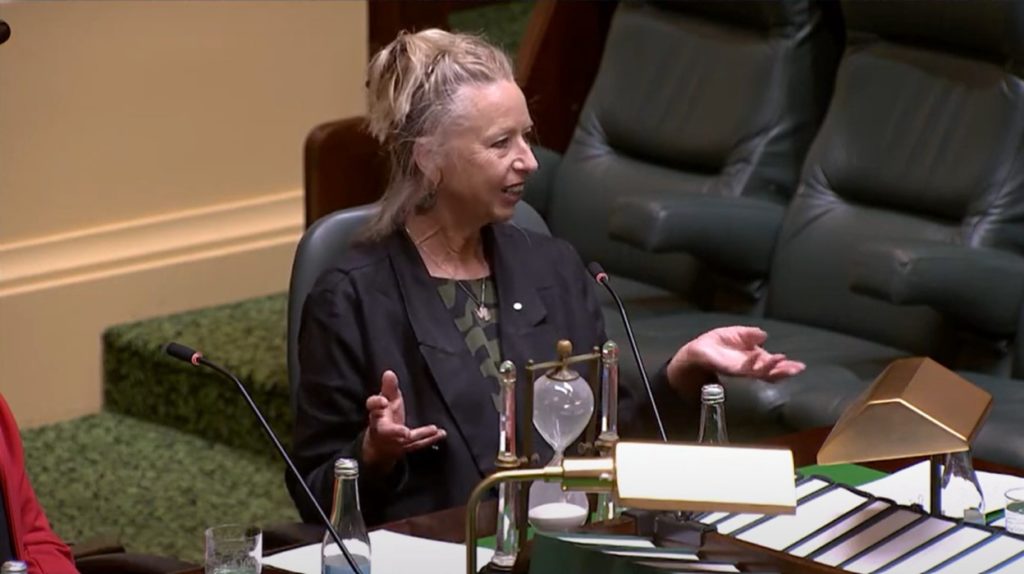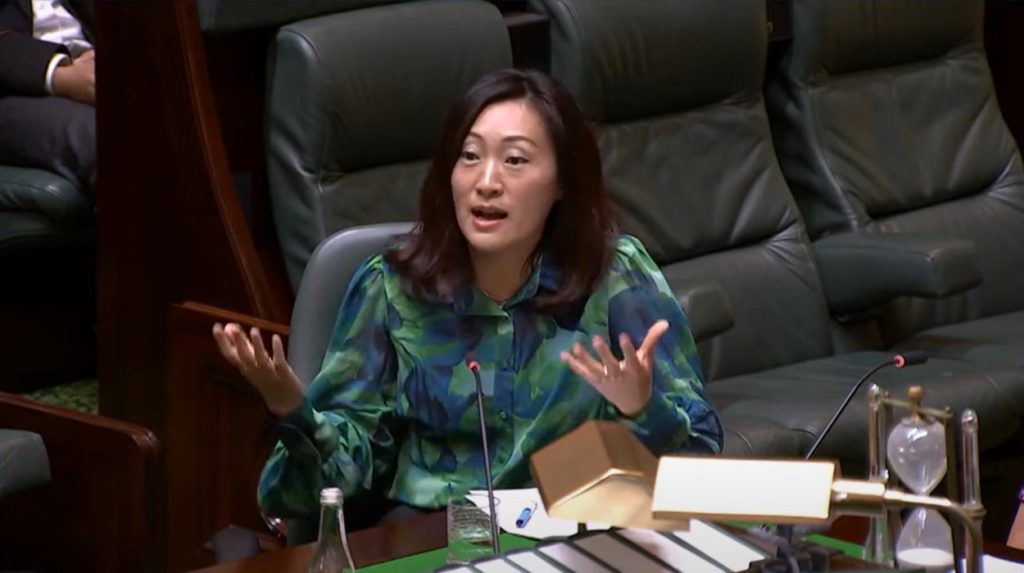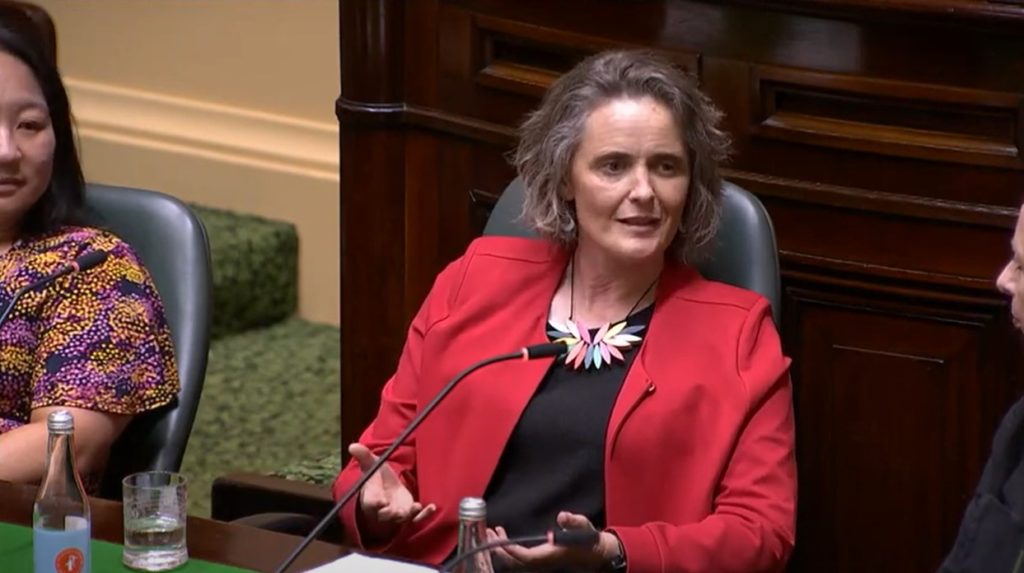Leadership in a Time of Change: Women in STEMM Leadership Roles
By Dr Catriona Nguyen-Robertson MRSV
Senior Editor, Science Victoria
The world is rapidly changing in many ways. The global average temperature is rising, technological progress is accelerating, and the number of Australian women in STEM-qualified occupations increased by around 9,000 (4%) from 2021 to 2022.1 We need to harness the skills and experiences of women and non-binary people in STEMM as we navigate the unknown and uncertain. We’re getting there, but we’re not there yet.
The annual International Day of Women and Girls in Science is a reminder that women and girls play a critical role in STEMM and that their participation should be strengthened.
Several factors perpetuate the STEMM gender gap. Gender stereotypes portray certain STEMM fields as masculine, girls have fewer role models to inspire their interest in these fields, and subsequently, because fewer women study and work in STEMM, these fields tend to sustain exclusionary, male-dominated cultures that are not supportive of or attractive to women and other underrepresented groups – it is a perpetual cycle that we need to break.

To discuss the way forward, the Parliament of Victoria, the Royal Society of Victoria, and the Inspiring Victoria program convened a panel of four remarkable women in STEMM to discuss Leadership in a Time of Change.
Having just returned from a warming Antarctica as part of the Homeward Bound leadership program for women and non-binary people in STEMM, A/Prof Vanessa Wong, A/Prof Jen Martin, Dr Catherine Lopes, and Ms Fern Hames PSM shared their insights to the role leadership plays in a sustainable future in a conversation mediated by Natasha Mitchell.
The transformational power of a place like Antarctica
 As part of the Homeward Bound voyage, all four women spent 20 days in the Antarctic Peninsula, bearing witness to the impacts of a changing climate. It was beautiful, like being in a documentary, but also devastating to see the planet changing. They were mesmerised by the beauty of the Antarctic icebergs, but the large number of icebergs they saw early in the summer was unusual – perhaps due to warmer temperatures meaning that more were being calved off from glaciers. They also saw the destruction of avian flu amidst such a bird-rich, remote area.
As part of the Homeward Bound voyage, all four women spent 20 days in the Antarctic Peninsula, bearing witness to the impacts of a changing climate. It was beautiful, like being in a documentary, but also devastating to see the planet changing. They were mesmerised by the beauty of the Antarctic icebergs, but the large number of icebergs they saw early in the summer was unusual – perhaps due to warmer temperatures meaning that more were being calved off from glaciers. They also saw the destruction of avian flu amidst such a bird-rich, remote area.
With the words often used to describe being in Antarctica: “picturesque”, “surreal”, and “majestic”, it is easy to think of it as otherworldly. But, as Fern points out, it is part of our planet. For a long time, we have thought of Antarctica as isolated from the rest of the world, but the consequences of climate change do not just stop at the Southern Ocean. We cannot ignore our impact.
‘When my children are old enough, it might not be there,’ says Catherine. ‘They may have to rely on virtual reality while standing in a fridge or cold room to get the same effect.’ But, of course, it won’t be the same.
We’ve got to step up and act – and women and non-binary people have different approaches and views that we should include in the solutions to these global challenges.
Working across disciplines to develop climate solutions
“I want to make the world a better place, and I’ll use science as my tool.” – A/Prof Vanessa Wong
The four scientists work across different disciplines of STEMM but are all committed to mitigating the effects of climate change, with a particular sense of urgency after witnessing a changing Antarctica.

Vanessa studies soil, a fundamental part of our lives: it is an important part of the nutrient cycle, is where we grow food, cleans water, and is the base on which our infrastructure sits.
There is growing interest in storing carbon in soil to reduce atmospheric carbon dioxide and buy us time.2 Carbon is sequestered in soil via the photosynthesis of plants, and soil carbon is strongly linked to greater soil quality and plant growth. She works hard to ensure that this process is robust, and to improve land and water management strategies.

Passionate about nature, Fern is concerned about the clear impact that climate change has on ecosystems.
She advocates for people looking towards nature-based solutions to reduce these impacts. She is passionate about wild places, and about connecting people with nature and science. Evidence shows that people who connect with nature are more likely to value and take action to protect the environment,3 and so she is helping to unite Victorians with nature, especially through storytelling.

Catherine tells stories in another way: with data.
For over 30 years, she has worked in computer science and artificial intelligence. She generates data to develop solutions for global challenges and then tells the stories of that data. Among many roles, Catherine is a member of the Governing Board at the Environment Protection Authority Victoria, where she contributes strategic insights to drive positive environmental outcomes.

It is all very well for scientists to create solutions, but we need society on board too. In an era of misinformation and disinformation, Jen is focused on improving science literacy. She aims to ensure that people are armed with facts – and that those facts are accurate.
As an ecologist who studied possums, she realised that for her work to have any meaning, she would need to talk to local farmers, politicians, and land managers – not the academics she had been trained to communicate with. She therefore wants to help other scientists develop their communication skills to make STEMM and scientific information to be inclusive for everyone.
It is all very well for these women to have ideas. But how do their voices get heard? Fact #8 of the Homeward Bound 28 Cold Hard Facts Impacting Women in Leadership states that “She tends to be ignored while he is listened to”.4
Being heard as a leader in a male-dominated landscape

How can women be taken seriously in a field that has for so long been dominated by men? What do women need to feel safe enough to stand up? Many of the students who attended the session expressed their concerns, especially noting that only a handful of female and non-binary students take certain STEMM subjects in year 12 (i.e. specialist maths and physics).
‘Women say “sorry” a lot,’ says Natasha. But they don’t need to. The panellists advise women to keep their heads up high, stick to what you believe in, and wait for their moment – rather than constantly shouting, pick your battles.
Acknowledging the problem is a start. All four panellists have been in situations where they were the only – or one of very few – women in the room. But building allies and finding people around them to be their support has helped them stand their ground. Working with others is an important part of success, for both the support and for different viewpoints when it comes to solving problems. Homeward Bound’s motto is that “we are stronger together” – for good reason.
As women leaders – and the students in particular – continue to carve out their paths in STEMM, their contributions will be indispensable for cultivating a sustainable future. Through their resilience, determination, and innovative thinking, they not only break through literal ice and barriers but also pave the way for inclusivity, diversity, and collaboration in scientific endeavours. In the journey towards sustainable progress, the voices and leadership of women in STEMM are not just valuable – they are essential.
Hearing from students
The students in attendance at Parliament House brilliant questions that reflect some of the concerns of young girls and non-binary people in STEMM:
 How can we be taken seriously in a male-dominated space?
How can we be taken seriously in a male-dominated space?- Have you ever been undermined in your workplace, and how did you deal with that?
- Currently there are only two girls studying Specialist Mathematics in the whole school. How can schools better support us from the start to get into mathematics and STEMM?
- How can we address the gender gap in STEMM leadership? What are the barriers?
- How did you persevere when facing challenges in your career?
- Back when you were in high school, did you picture yourselves being where you are today?
- What are the personal motivations you have and how do they keep you going?
- What – other than personal interest – influenced your decision to go into science and maths?
- Given that you are in such different fields of science, what role does your field play in climate change?
- How do you communicate the impacts of climate change that you just saw in Antarctica?
- How can we help you do that as young people?
- What was the goal you wanted to achieve in Antarctica, and did it change during the trip?
- What was daily life in Antarctica like? Were there different challenges each day?
- What do you think are the consequences of avian influenza in Antarctica?
The Hon. Maree Edwards MP, who hosted the event, says that she hopes these students will go on to become “scientific influencers” as the next generation of STEMM leaders. With questions like this, their future is already looking bright.
References:
- Department of Industry, Science and Resources. (2022). “STEM-qualified occupations”. STEM Equity Monitor. industry.gov.au/publications/stem-equity-monitor/workforce-data/stem-qualified-occupations
- Agriculture Victoria. (2022). “Soil and carbon for reduced emissions”. Understanding carbon and emissions. agriculture.vic.gov.au/climate-and-weather/understanding-carbon-and-emissions/soils-and-carbon-for-reduced-emissions
- Arthur Rylah Institute. (2023). “Victorians Value Nature”. People and nature. ari.vic.gov.au/research/people-and-nature/victorians-value-nature
- Dattner, F., et al. (2019). Mother Nature Needs Her Daughters: A Homeward Bound Global Review and Fact Sheet Investigating Gender Inequality in STEMM. Western Sydney University, Research Direct Library. doi.org/10.26183/5d22d5fbe2349






